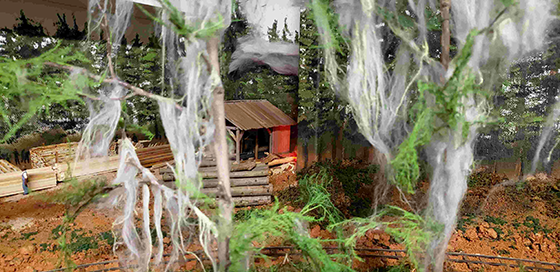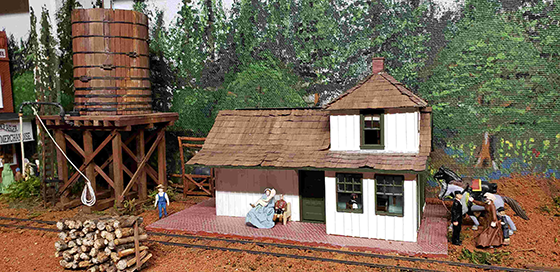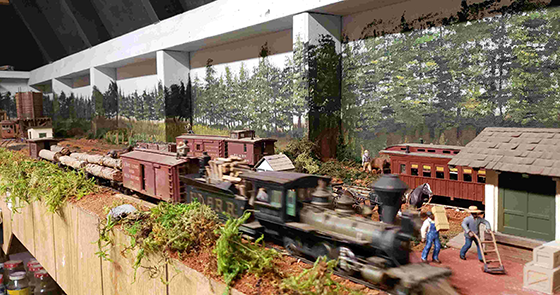LOCATION: Pflugerville (North)
SCALE: 7/32"
SIZE: 10' x 16'
This 7/32" finescale 3' gauge railroad (equipment slightly smaller than On30 to provide for
3' gauge) depicts an actual East Texas narrow gauge line in the late 1870's through the
Piney Woods from the major Texas inland port of Jefferson to the town of Hughes Springs.SCALE: 7/32"
SIZE: 10' x 16'
The EL&RR was chartered by the State of Texas in 1871, with construction starting shortly thereafter, and it ultimately ran from Jefferson to McKinney on the west and Shreve’s Port (now Shreveport) on the east. It was owned by the Katy (or a Katy subsidiary) from 1881 to 1923 when it was sold to KCS subsidiary Louisiana Railway & Navigation Co. (LR&N/L&A), was standard-gauged in 1893, and is now a part of the KCS east-west mainline from the DFW Metroplex to Meridian, Mississippi.
Started in the early 1980s and now largely complete after a too-long hiatus (children, work, etc. - you know the drill), this is a small around-the-wall point-to-point layout with a removable connecting bridge for continuous display operation, constructed in a 10'x16' outbuilding. It is almost entirely scratch-built: engines on modified recycled HO chassis, rolling stock (except for one significantly modified kit caboose), structures, and hand-laid track on hand-cut crossties. Scenery is mostly natural materials, including real East Texas red dirt. Construction is modular, cantilevered from the walls. It won several awards during its early days when it was previously displayed.
Take a look at early Texas railroading in the immediate post-Reconstruction period, built in the analog age. You won’t find any diesels, steel cars, double-stacks, knuckle couplers, air brakes, FREDs, RCUs, signals, telephones, ballast, CTC, PTC, DCC, TOFC, prototype electric lights, automobiles, or trucks. We can offer you what was reported in S.G. Reed’s Texas Railroads to have been a bone-jarring ride that “tempted Providence” if the train ran over 15 miles per hour. But it definitely beat walking or riding a horse or a buckboard.
Access to the layout requires walking on brick pavement from the street to the back yard, walking up a short ramp (less than 1' rise), crossing a concrete patio and about 10' of lawn, with one step up through a duck-under entrance.









